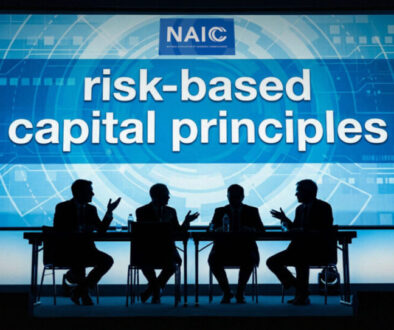The Reshaping of Retirement: Volatility and the ‘sequence of returns’

As a record number of baby boomers leave the workforce each day, the convergence of economic headwinds, market instability, and geopolitical uncertainty is reshaping what retirement looks like in America. Retirement advisors are stepping into a new kind of frontline—less about returns and more about resilience.
“Many folks are reconsidering their plans for retirement due to market uncertainty,” says Erika Wood, executive director of planning at Balefire, a Dallas-based investment advisor. ” ‘Sequence of returns risk’ is the risk that a bear market could happen at the wrong time—like early in retirement. It’s one of the most significant risks affecting people’s ability to retire successfully.”
This sequence of returns risk—where a downturn early in retirement disproportionately damages long-term wealth—has moved from textbook theory to lived experience. While some retirees may hope for a rebound, others cannot afford to wait. While markets have rebounded recently, that only increases anxiety that things can change on a whim and that the steps taken to protect one’s investments could be wrong.
Market volatility, driven in part by tariffs imposed and threatened by the Trump administration, is delivering painful consequences for older Americans.
Tariffs ‘rattled the market’
“Trump’s sweeping tariff policies have rattled the markets, and older Americans have watched years of retirement savings unravel,” says Corie Colliton of SeniorLiving.org.
A recent study by the group revealed that 40% of older full-time workers are now delaying retirement, and more than 40% of retirees are cutting back on spending. One-third of those who saw losses reportedly now regret voting for Trump.
“This isn’t just a Wall Street story,” Colliton says. “It’s a Main Street one. Tariff-induced instability is rewriting retirement plans for millions.”
Financial advisors are caught in a paradox of growing demand versus shrinking portfolios.
“Even though retirement accounts can be managed and continue growing, not contributing additional funds means advisors have less to do,” says Melanie Musson of InsuranceProviders.com. “Advisors who have many clients retiring around the same time will see reduced profits.”
Yet, this reduced volume is counterbalanced by increased need.
“This is when advisors have the most value to deliver,” says Brandon Tucker, advisory financial practice management consultant at Fidelity-owned eMoney Advisor. “Great advisors will view this period as an opportunity. Consulting a financial professional is that much more important now.”
Investment strategies evolving
Investment strategies are evolving—from accumulation to preservation, from risk-taking to risk mitigation. Robert Rickey of StraightLine, a Michigan-based retirement investment advisor, recommends retirees keep a flexible withdrawal plan and keep a healthy cash cushion to avoid selling investments in down markets.
“Volatility… can impair a portfolio’s ability to grow or support retirement income needs,” he says. “Planning strategies like flexible withdrawals or guaranteed income products can build resiliency.”
Tom Buckingham of Nassau Financial Group echoes that advice. “Stick to your long-term retirement plan and be cautious about moving too much to cash. If you’d done that a few weeks ago, you might’ve missed the rebound. Annuities can reduce both market and longevity risk.”
Nicole Farbo of Johnson Financial Group points out that lifestyle expectations must now come with contingency planning.
Planning for retirement: ‘Buffer’ needed
“Retirees may want a big trip or a house project, but if it coincides with a downturn, they’ll want a buffer in place,” she said, noting that market timing—often out of one’s control—can shape whether retirement dreams are deferred or diminished.
From his vantage point as an estate planner, William London, partner at Kimura London & White LLP, in Irvine, California, sees rising anxiety.
“More clients are asking about guaranteed income options and estate planning devices like trusts.,” he says “This is no time for passive planning. Joint efforts between planners, estate attorneys, and CPAs are essential.”
Even for those not yet retired, the uncertainty is tangible.
“Living in volatile times can be a gut check,” says Erika Wood. “If investors feel nervous enough to move to cash in a down market, that tells me their risk tolerance has changed—or wasn’t considered to begin with.”
This is not just a financial story—it is an emotional one. The stakes are high, and for many, the retirement they envisioned looks increasingly like a moving target.
In this queasy moment, one thing is clear: retirement is no longer the finish line. It is a phase of life that demands as much planning, vigilance, and adaptability as any before it.
© Entire contents copyright 2025 by InsuranceNewsNet.com Inc. All rights reserved. No part of this article may be reprinted without the expressed written consent from InsuranceNewsNet.com.
The post The Reshaping of Retirement: Volatility and the ‘sequence of returns’ appeared first on Insurance News | InsuranceNewsNet.





